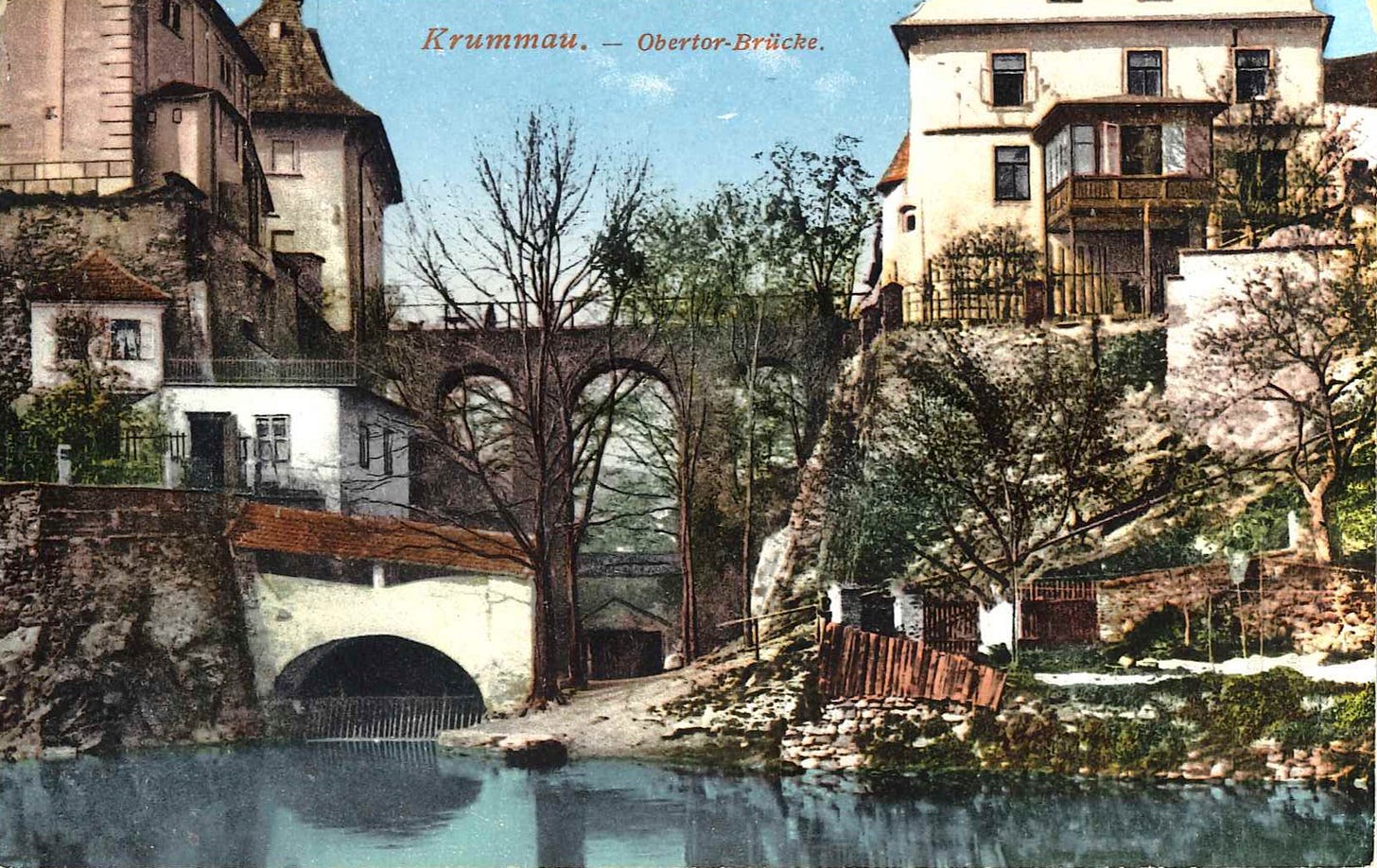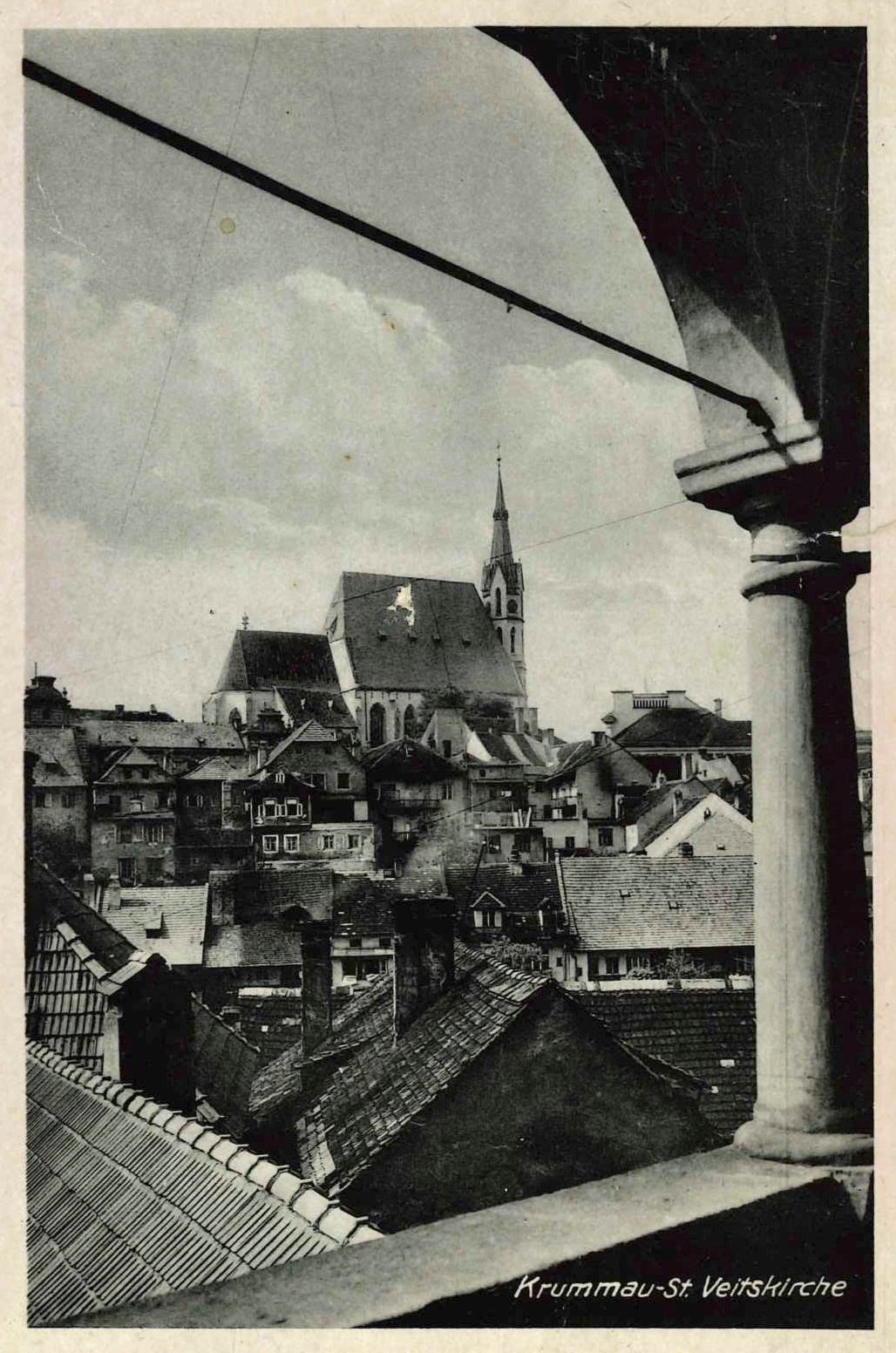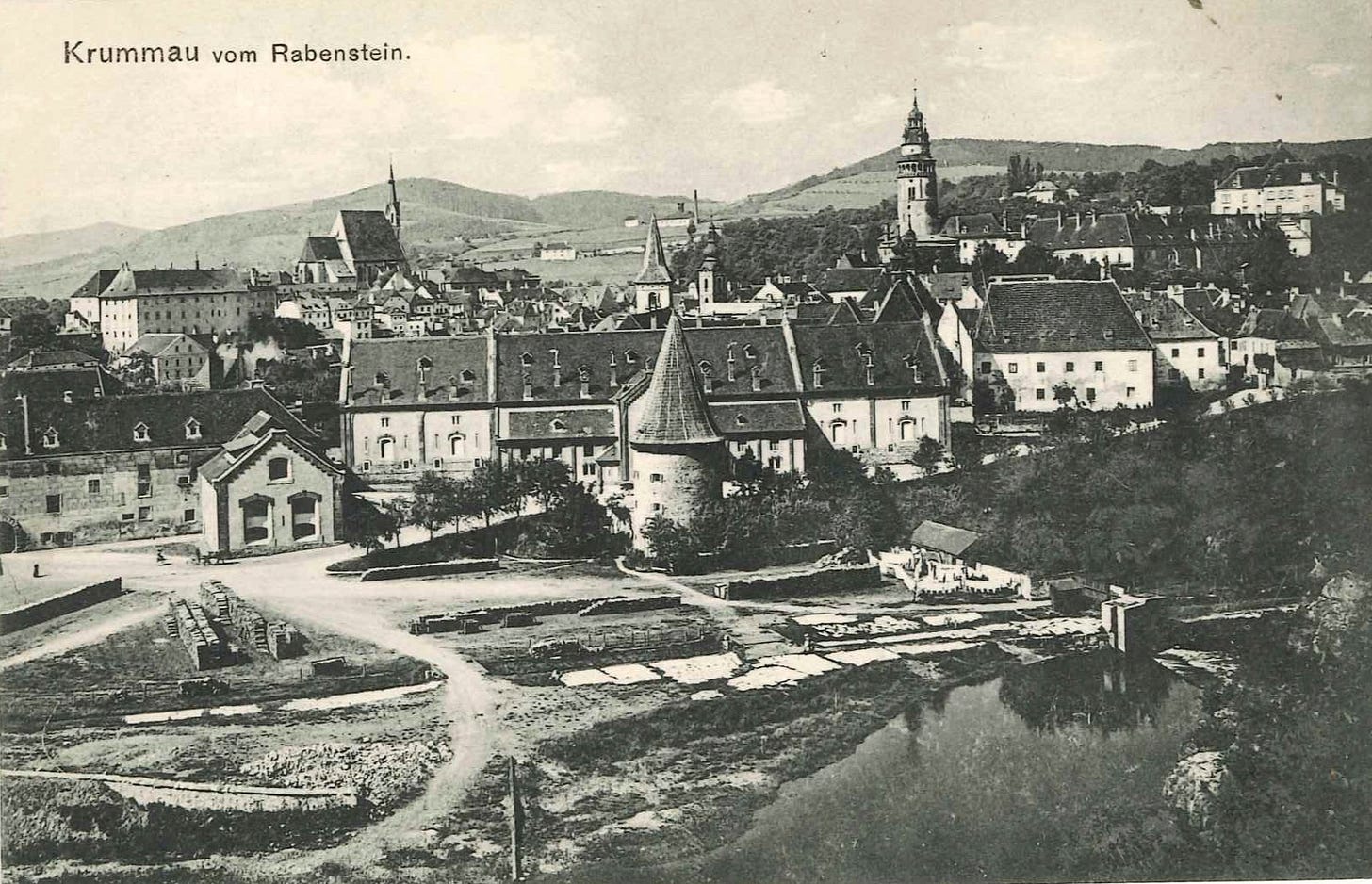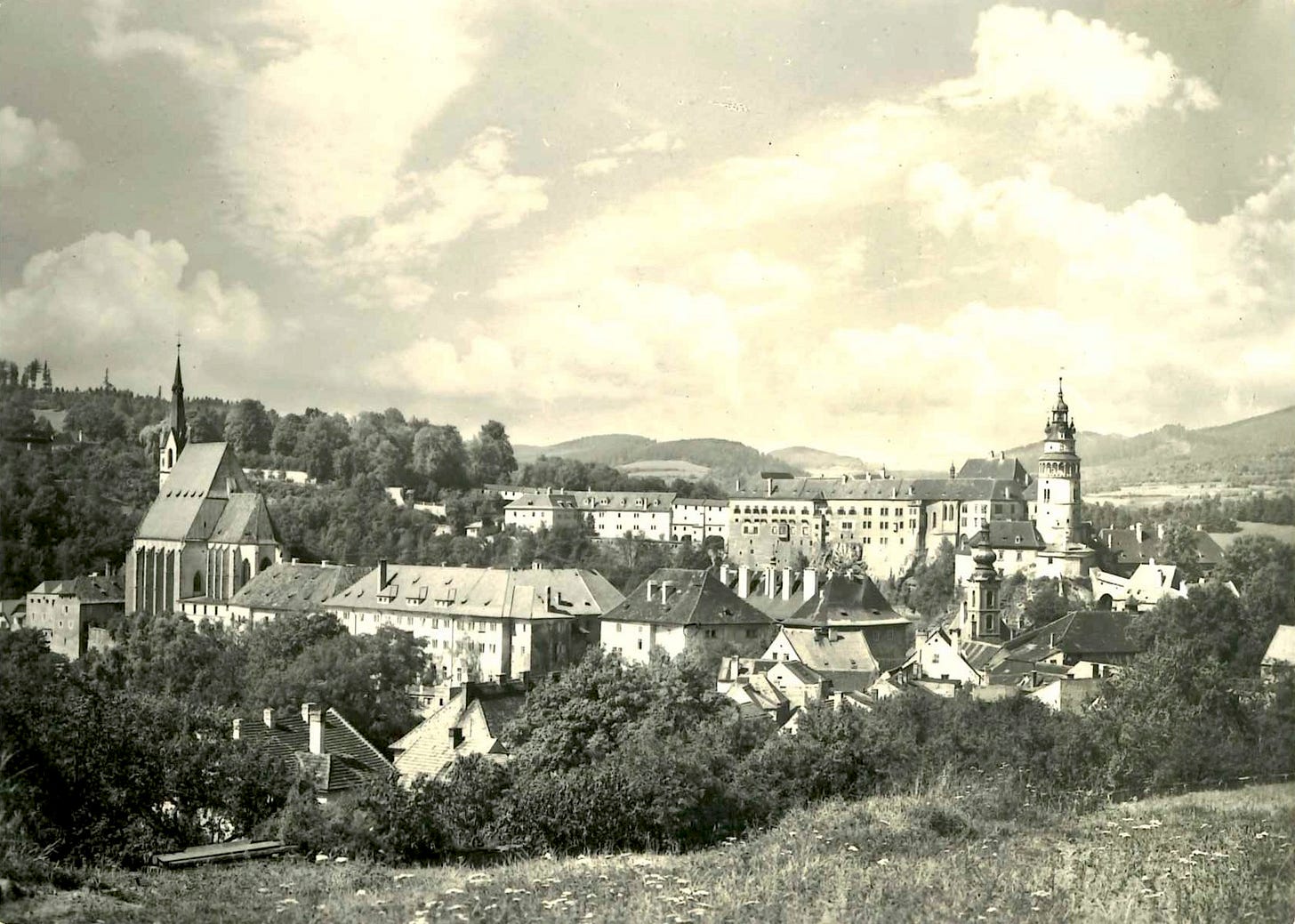This is a follow-up posting on yesterday’s essay on how I got ‘hooked’ on these postcards. If you haven’t read it yet, click here:
In this posting, I mentioned the following issue:
I do have more postcards of Český Krumlov/Krumau, and I shall discuss them in a separate posting as these other images show quite different places and points of view.
One of the rather curious things I noticed while looking at these postcards from southern Bohemia was—that one group essentially reproduced what art historians call a Bildkanon, or “pictorial canon”, that is, something like a kind of standardised point-of-view showing virtually the same images (originally, the term refers to the Holy Trinity, to which, over time, saints, martyrs, angels, etc. were added).
Such a Bildkanon is quite clearly visible in yesterday’s posting of the postcards showing Český Krumlov/Krumau across time (the twentieth century) and various political régimes (Austria-Hungary, the First Czechoslovak Republic, the Nazi German period, and the Second Czechoslovak Socialist Republic).
Yet, these weren’t the only images on these postcards, and those ‘odd ones out’ are the subject of this posting.
Postcards ‘Beyond’ the Bildkanon



At this point, I’m able to tell you that these features hold true for many other places that I’ve found in the Erich Sonntag Postcard Collection: there are quite a few postcards that show virtually the same image, typically also taken from the same, or only slightly different, perspective.
And then there are those postcards that show, well, different parts of town, street life, the interior of restaurants, and the like.
While I’m unsure which category I prefer, both are fascinating, and I’m going to show you more of both categories in due time.






I’d like to see both